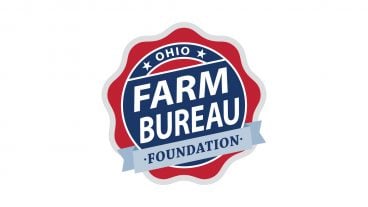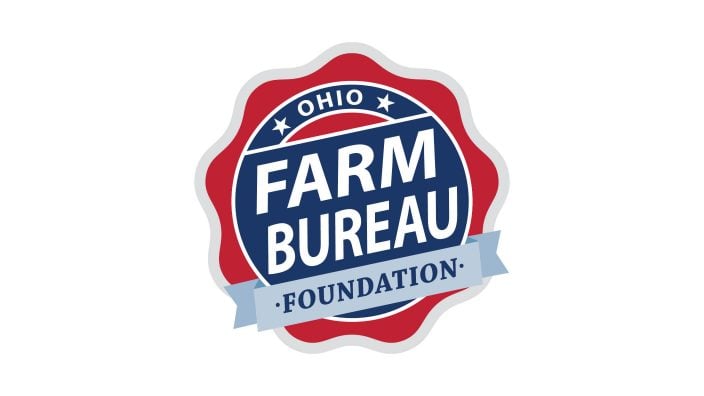Applications for Ohio Farm Bureau Health Plans now available
Members have three ways to apply: contacting a certified agent, calling 833-468-4280 or visiting ohiofarmbureauhealthplans.org.
Read MoreThanks to the perseverance of our members and diligent work of Farm Bureau staff, Current Agricultural Use Value reform was made law by the passage of the state budget this summer.
“This outcome was the result of a concerted, three-year effort of lobbying the tax department, legislature and administration,” said Ohio Farm Bureau Executive Vice President Adam Sharp, noting that thousands of phone calls, visits, emails and letters from members from across the state telling their elected officials that CAUV needed to be addressed made a huge impact.
And not a moment too soon.
Statewide, Ohio farmers saw a 307 percent increase in property taxes charged between 2008 and 2014. Those higher taxes were being paid at a time when some farm crop prices had fallen as much as 50 percent and a formula that had worked well for decades started to falter.
“We had the perfect storm,” said Leah Curtis, Ohio Farm Bureau policy counsel. “We had interest rates being held down on a federal level, while we had higher farm prices in the calculation from a few good years and residential values were going down.”
It was at this time that the tax bills for farmland owners were coming due.
“The formula was becoming disconnected from the farm economy,”
Curtis said.
Ohio Farm Bureau took aggressive action starting three years ago to address the CAUV calculations that were drastically increasing some property tax bills for farmland owners. In June, that work got results when Farm Bureau members worked together to reform CAUV property taxes through legislative action.
“It wasn’t easy,” said Yvonne Lesicko, OFBF vice president of public policy. “This was a monumental effort of the entire organization. There were opponents who resisted our every move, but in the end the power of Farm Bureau to organize members and tell their stories directly to lawmakers won the day.”
The reform legislation signed into law by Gov. John Kasich ensured several changes affecting the formula:
• Financial market data used in the calculation is now tied to the farm economy and what happens on
farms, rather than the general financial markets;
• An increase in holding assumptions from five years to 25 years, as most farms are passed down in a family and are owned and operated for more than five years;
• Equity assumptions, previously based on the general federal
interest rate, will now be based on farm-specific equity data from the United States Department of Agriculture; and
• CAUV land used for year-round conservation practices or enrolled in a federal land retirement or conservation program for at least three years, will now be valued at the lowest of the values assigned on the basis of soil type.
The conservation provision was as key as any other provision in the formula, according to Jenna Beadle, OFBF director of state policy.
“Working to remove the tax penalty for placing land in conservation was important for our members,” Beadle said. “Farmers are trying to do the right thing and our tax policy should be supportive of their efforts.”
It is estimated that these new changes, coupled with previous Farm Bureau-led reforms, will result in average savings of 30 percent for 2017 reassessments. The reforms are phased-in over two reassessment cycles – six years – in order to assist local communities and schools as they transition to the more accurate CAUV formula.
“Going forward we’re going to have a CAUV calculation that’s more accurate and more directly related to the farm economy,” Curtis said.


Members have three ways to apply: contacting a certified agent, calling 833-468-4280 or visiting ohiofarmbureauhealthplans.org.
Read More

The scholarship provides one renewable award of $10,000, supporting a student pursuing a degree in agriculture or an agriculture-related field.
Read More

A short conversation over the phone, a quick text message or even finding a small daily habit such as journaling can make a big difference.
Read More

One of the best decisions Shannon and Heather Utter made a few years ago was looking into a Farm Bureau member benefit that has ended up saving them thousands of dollars on their energy bills.
Read More

Ryan Hiser has experienced first-hand the importance of having the opportunity to vote on issues that will affect his family operation and other farmers.
Read More

Bill Patterson, Cy Prettyman and Adele Flynn will continue to serve as officers for Ohio Farm Bureau Federation.
Read More

Delegates discussed many topics impacting agriculture including farmland preservation, local foods, and succession planning.
Read More

Twenty-six farmers govern the state’s largest farm and food organization.
Read More

The 2025 recipients are Fred Cooke (posthumous) of Richland County, Marvin Dietsch of Williams County, Steven Knollman of Hamilton County and Michele Miller (posthumous) of Ottawa County.
Read More

Nathan and Jill Parriman grow seasonal crops, including Christmas trees, pumpkins and cut flowers, providing U-cut experiences that invite customers to engage directly with agriculture.
Read More